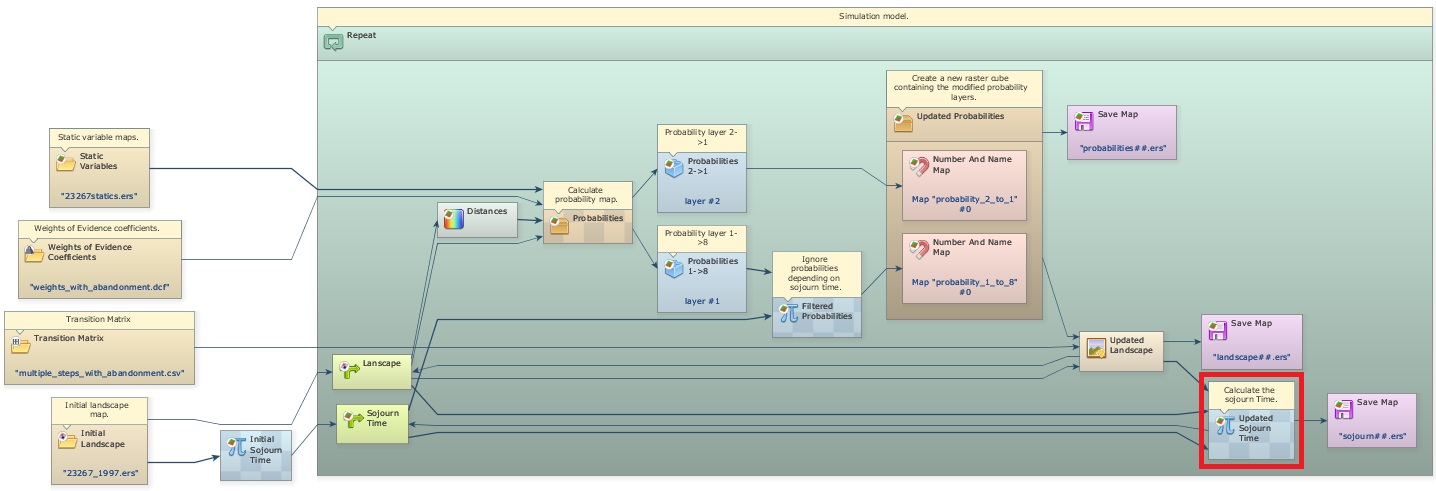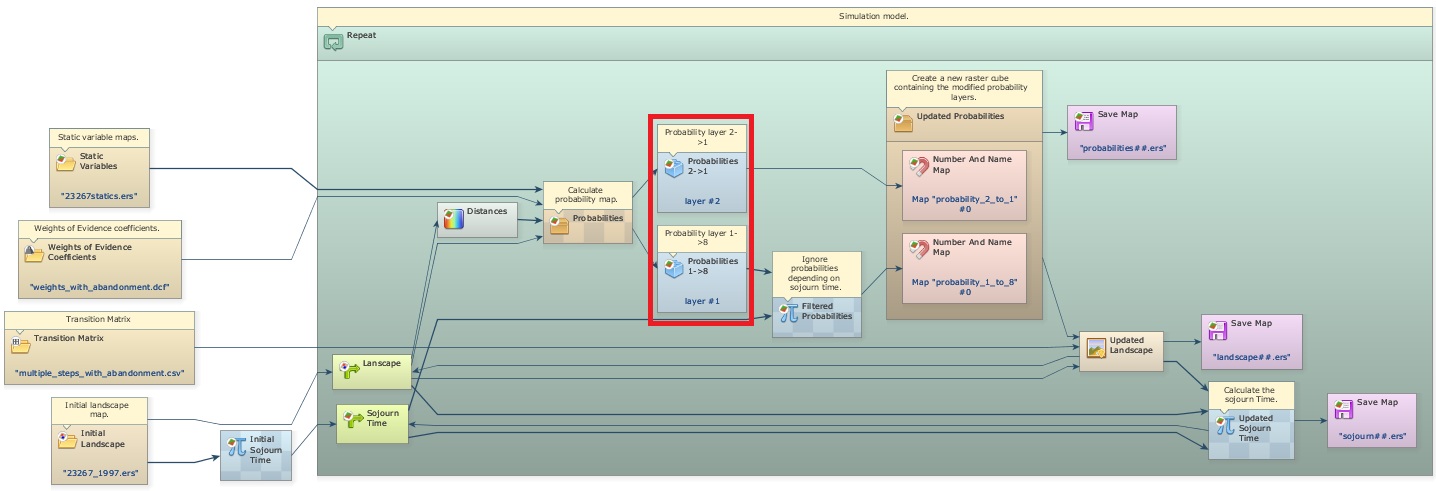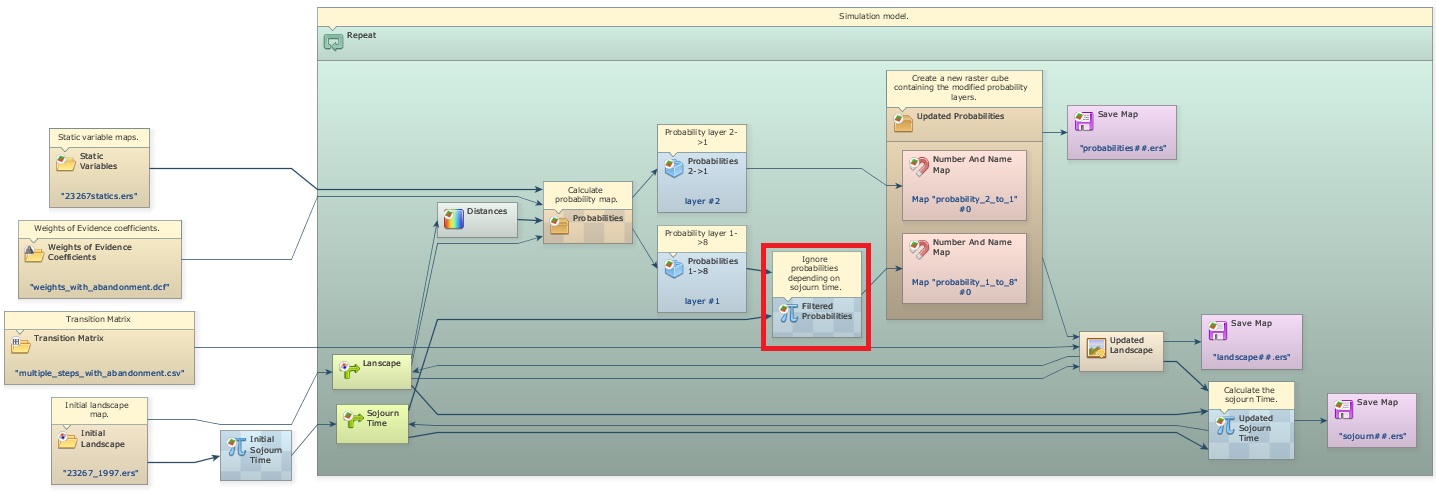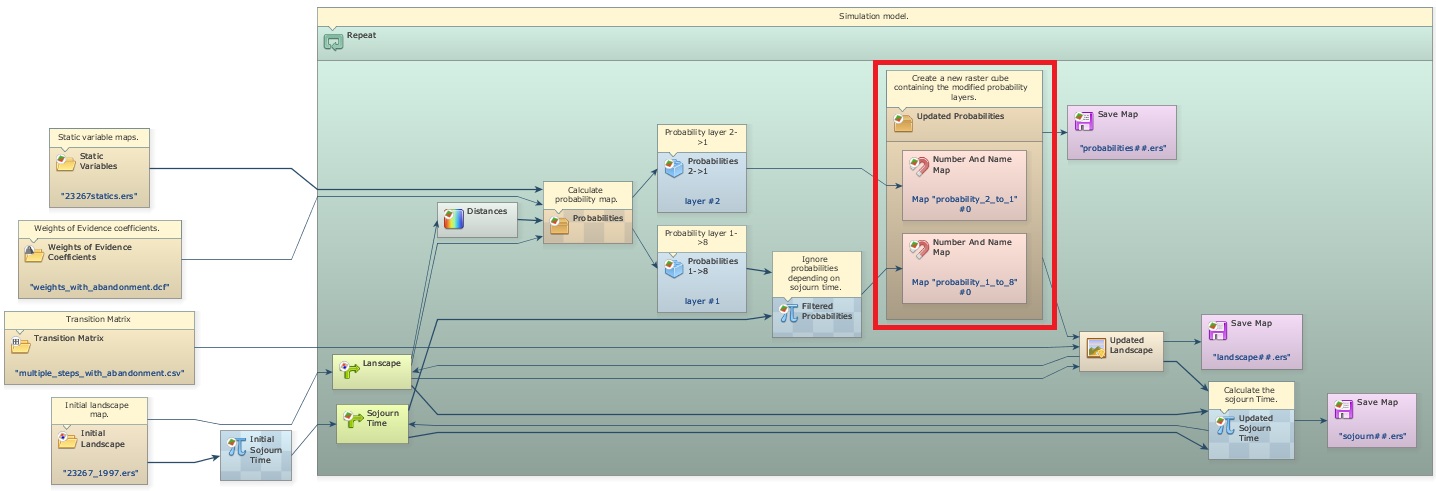This is an old revision of the document!
Using Sojourn Time
time implies that a specific transition or event will not occur unless a certain time has passed since a specific event has occurred.
The concept of sojourn time can be implemented using a map that keeps track of the time since a particular event has occurred (for example, a transition from state i to j). For each cell, a clock will count the time past after a particular event has occurred. In the end of iteration, this map is updated, if there is no new event, the model simply adds one to the cell’s sojourn time, and if an event occurs, the clock is set to zero (Fig.1).
The sojourn time can be used as a rule to constrain a transition from a state to the other only after a certain sojourn in a particular state. In this example, the sojourn time is used to influence the probabilities from deforested land (value 1) to abandon – regrowth (value 8). Land is only abandoned after 4 years in use: i.e. after deforestation has taken place (transition 2 to 1).
The sojourn map is initialized with high values (e.g. 9999). By doing so, it’s possible to differentiate cells where a certain transition has never occurred from cells that have changed during the simulation. This might be useful for further analyses.
At the end of iteration, a new sojourn map is calculated by comparing the previous land-use map with the current one. Cells whose states have changed, the corresponding sojourn times are set to zero; otherwise they are incremented by one time unit.
The sojourn time concept is applied to constrain a change. An easy way to do this is by modifying the corresponding probability map. As these maps are stacked in a cube raster set, you need first to extract the layers from the cube raster set, so the Calculate Map will be able to manipulate them separately.
After calculating the probability map using Calc W. of E. Probability Map, the layer of the transition from deforested to abandon (transition 1 to 8) undergoes a new calculation. This is a comparison of the sojourn time. If a deforested cell is older than 3 years, its probability is kept unchanged. If it is not, the probability to change to abandon is set to zero, impeding, as result, this transition to take place.
Then, the probability layers (the original layer with transition 2 to 1 and the new layer with transition 1 to 8) are put together again as a new cube raster dataset, which is passed on to the transition functions, Expander and Patcher.





